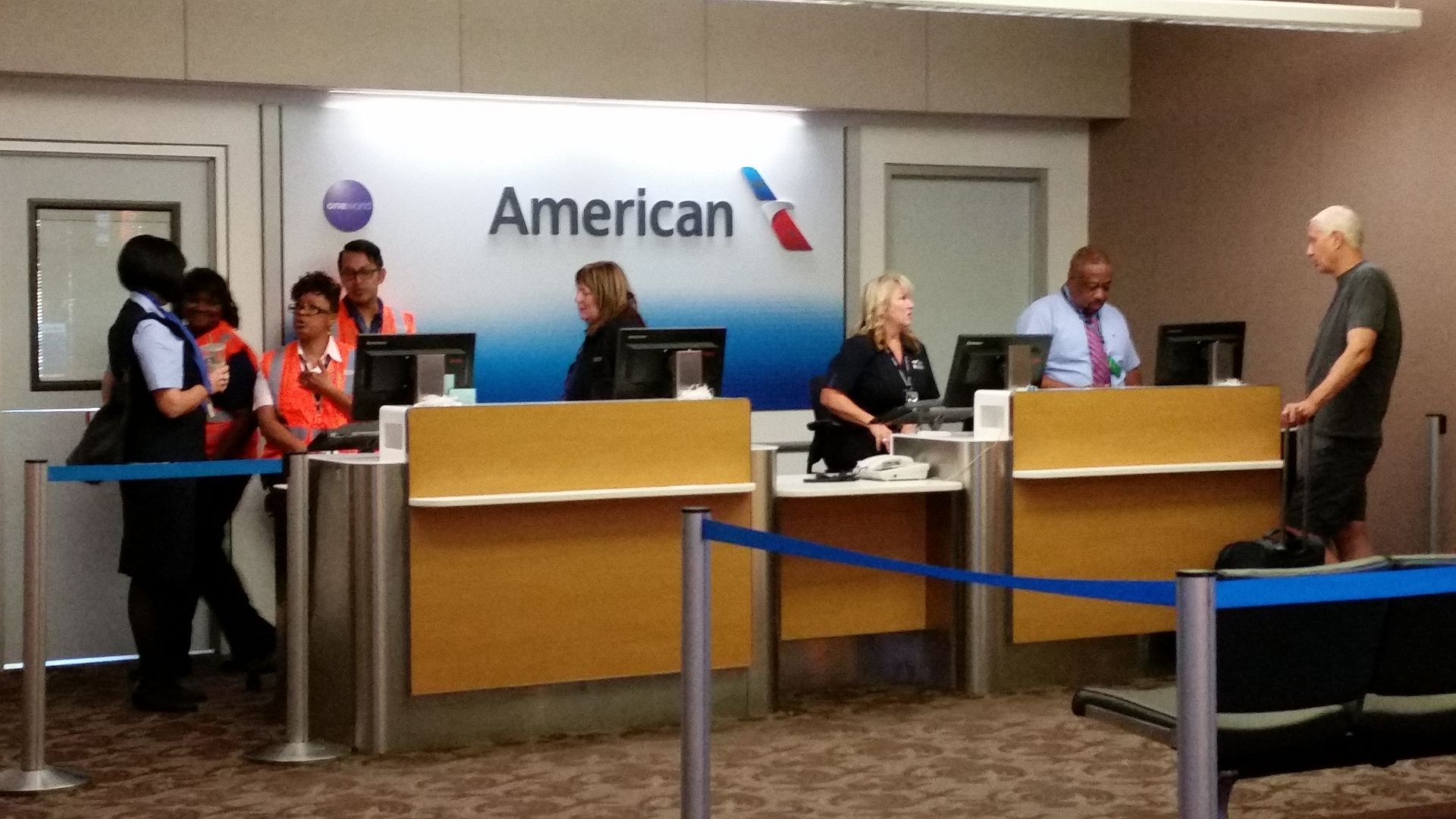American Airlines believes that investing in product, while necessary to keep up, won’t be a sustainable advantage. All airlines can buy the same products. So the real competitive advantage has to be culture.
The airline does a weekly podcast for employees, which they make available on iTunes and Soundcloud so they’re open to public listening.
This week’s episode is about the airline’s Elevate Training (“Elevate the Everyday Experience”) which is a two day program for front line employees.
The behaviors they’re working to inculcate are,
- acknowledge the customer
- be present
- show you care
- proactively communicate
- give options

125 front line employees from reservations, service recovery, airport customer service and premium services facilitate the training. 35,000 employees went through the program between fall 2016 and spring 2017.
This basic stuff. It isn’t Singapore Airlines training learning to lay down servingware “inside out” — serving a window seat passenger that means placing items first by the window, placing one item precisely on the tray at a time and ensuring that Singapore logos face the passenger or practicing asking a passenger if they’d like bread and practicing pouring champagne.

The number one thing that makes a difference in coach passenger experience is having an empty middle seat next to you. After that it’s just being acknowledged, rather than feeling like you don’t matter.
The most important customer service lesson I ever learned was on an easel pad in Randy Petersen’s office (“The House of Miles” which was located on Frequent Flyer Point in Colorado Springs) the first time I visited: “Don’t ever say no. What I can do for you is…”
In other words, it’s not enough just to listen to what a customer asks for and tell them whether it’s allowed. You must address their problem. You can’t always give them what they want, but if you understand their needs you can offer a solution that’s the best available given constraints.
Customer service training is necessary, of course, but it’s not sufficient. It’s a very small percentage of employees who ruin the image of the airline and genuinely serve customers poorly. But when customer-facing employees behave badly, or shirk their duties, it’s demoralizing to the rest of the workforce. And when underperformers do just as well as employees who go above and beyond it’s tough to stay motivated to go above and beyond. In other words, there have to be employment consequences for harming the business.
I find that it’s important to set yourself up for customer service success as a customer. If you want decent customer service,
- It helps to be nice don’t come off as entitled and don’t blame your problem on the person you happen to be talking to (who likely didn’t cause it)
- Empathize with them. They’re people, and odds on they are dealing with mostly unhappy customers. Smile.
- Be clear about what your problem is. Don’t unload extraneous detail and make them sort through your feelings to find out what you need.
- Offer solutions. Don’t be pompous and approach them as though you know more about how to do their job than they do, but come armed with suggestions. They don’t know you, what you’re willing to go through to get where you’re going, so their starting point is going to be that you’re the median customer. They may not suggest a forced overnight option, even if you’d be open to it, for instance.
Here’s the podcast:


Set up for success as a customer – spot on! Has been working for me for the most part.
I’d also throw in good old “HUCA” as a tool in your kit as a customer, and even beyond that – don’t just classic “HUCA”, but use different mediums. If you HUCA a few times, and don’t get what you need / wish for, try to reach out to the twitter team, email customer relations etc. Throwing signals in different directions, and one of them just might hit the target:)
Their training is worthless when you have a CEO that continues to destroy the airline one day at a time initiating hostile business behavior directed at the flying public.
The culture is tainted at the top with poor decision making on a daily basis and it only filters down to the front lines
Poor quality uncomfortable seats and insufficient leg room
Cramped bathrooms that are a disgrace
Awful disgraceful US Air allotment for award availability
Terrible food and beverage/ dining
Poor service recovery
A lack of an 800 # to deal with customer relations issues
A general lack of appreciation for customers period and any kind of goodwill gestures 99% of the time when it is clearly appropriate with mechanical delays abused damaged baggage etc
Even Advantage customer service is closed to assist customers on weekends when their customers are off
There is so much wrong at American I would need hours to try and communicate it properly
But that’s why I now fly elsewhere nowhere near the upset and stress
I will fly two hours out of my way just to avoid American and pre Parker they were my favorite airline and program in the world
“And when underperformers do just as well as employees who go above and beyond it’s tough to stay motivated to go above and beyond. “
This is the definition of a union workforce and why US airlines will perpetually underperform
“It’s a very small percentage of employees who ruin the image of the airline and genuinely serve customers poorly”
That’s probably true but it’s a significant percentage of the customer facing (literally) staff who have absolutely no idea how to treat customers.